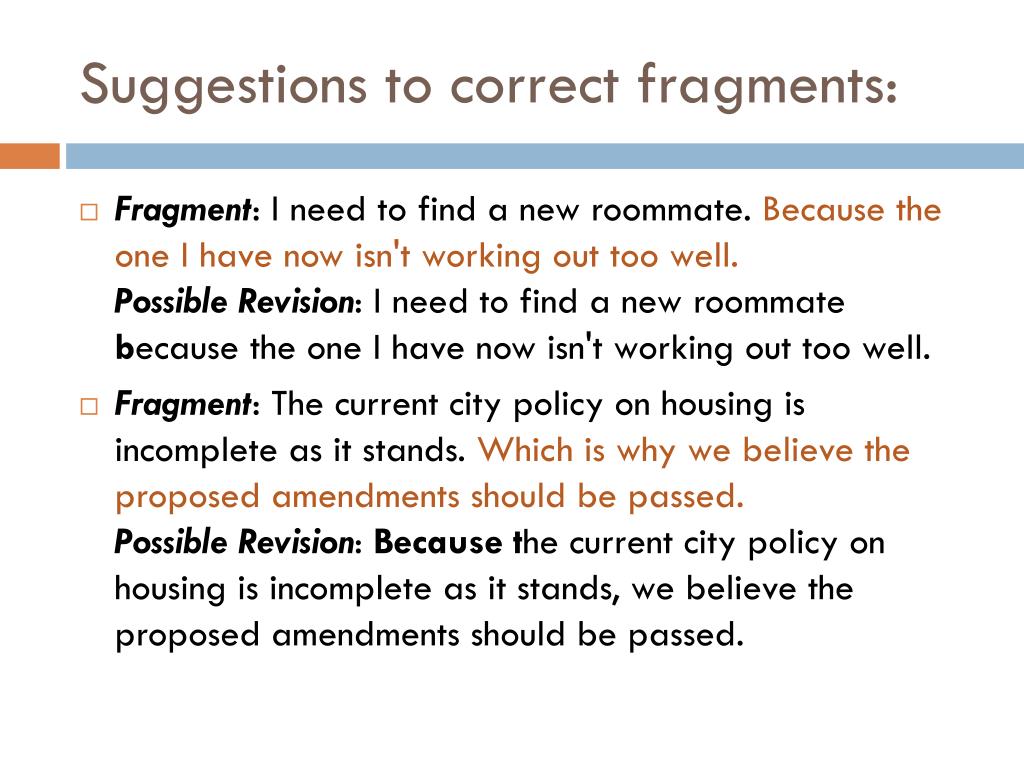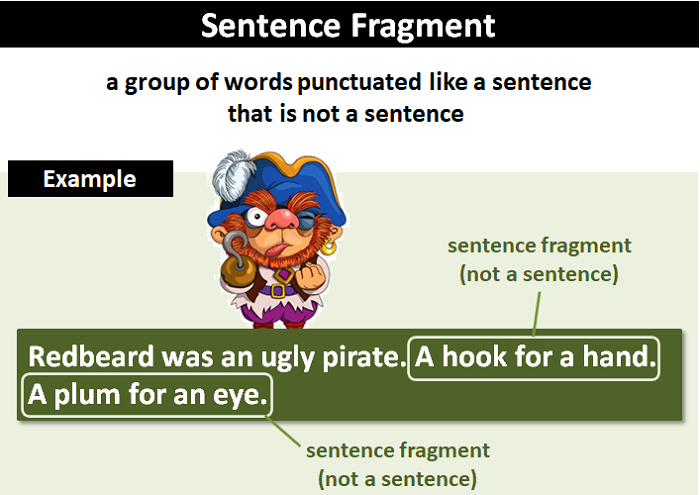

In this case, the sentence contains both a subject (scientists) and a verb (think). The second example is a complete sentence. "Einstein" serves as the subject (he is the one doing something), but the rest of the sentence does not express whĪt action he is taking. "Einstein, for example" is a fragment because there is no verb. This first example above has one complete sentence followed by a fragment. "Many scientists, such as Einstein, think in strange ways." If there is no identifiable action, the sentence is a fragment. To find the verb in a sentence, identify what happened. Verbs express action, existence or occurrence. The sentence does not contain a subject which answers the question, "who or what thought about leaving?" To correct the second sentence, one could write: "He thought about leaving the room." Alternatively, onĮ could combine the two sentences to form one complete sentence: "The student felt nervous before the speech, and thought about leaving the room."Ģ. The sentence contains a subject which answers the question, "who or what felt nervous?" The second sentence is a fragment,īecause there is no identifiable subject. The subject of this sentence is the student. The first sentence above is complete, because it contains both a subject and a verb. "The student felt nervous before the speech."

If there is no subject, the sentence is a fragment. To find the subject of a sentence, identify who or what is doing the action. A subject is the noun or pronoun about which something is written. There are three ways to check for sentence completeness:ġ. Missing verb (c) "danger" words which are not finished. There are three main causes of fragments: (a) a missing subject (b) a Sentence fragments are problematic because they are disjointed and confusing to the reader. Sentence FragmentsĪ fragment is a sentence which is not complete, and therefore not grammatically correct. These problems include: (a) the sentence fragment (b) the run-on sentence (c) lack of subject-verb and pronoun-reference agreement and (d) laĬk of parallel structure. There are four main problems that prevent people from writing complete, grammatically correct sentences. Not a sandbag, not a nail or a scrap of wire.‘ (Tim O’Brien, LZ Gator, Vietnam.SENTENCE CONSTRUCTION Writing Complete, Grammatically Correct Sentences Most places, but not at a Catholic church.’ (Scott Sigler, Nocturnal) Unfriendly, perhaps, but still common, still acceptable. ‘Most places in the world, a statement like that sounded normal.Count yourself lucky not to be a prisoner in the car at this moment, speeding away, or at the bottom of a donga with a bullet in your head. ‘Count yourself lucky to have escaped with your life.‘ Out, damned spot!‘ (William Shakespeare, Macbeth).Borrowed time and borrowed world and borrowed eyes with which to sorrow it.‘ (Cormac McCarthy, The Road) And somewhere two hunted animals trembling like ground-foxes in their cover. The crushing black vacuum of the universe. The blind dogs of the sun in their running. The cold relentless circling of the intestate earth. ‘He walked out in the grey light and stood and he saw for a brief moment the absolute truth of the world.It is defined as a fragment when either the subject or the finite verb that defines an independent sentence is missing.įragments should not be used in business writing, but they are perfectly acceptable if you use them in creative writing.
#A fragment sentence full
What Is A Sentence Fragment?Ī sentence fragment is a phrase or clause written as a sentence, the first word starting with a capital letter and the sentence ending with a full stop, a question mark, or an exclamation mark. In this post, we explain a sentence fragment. Writers Write creates resources for writers.


 0 kommentar(er)
0 kommentar(er)
